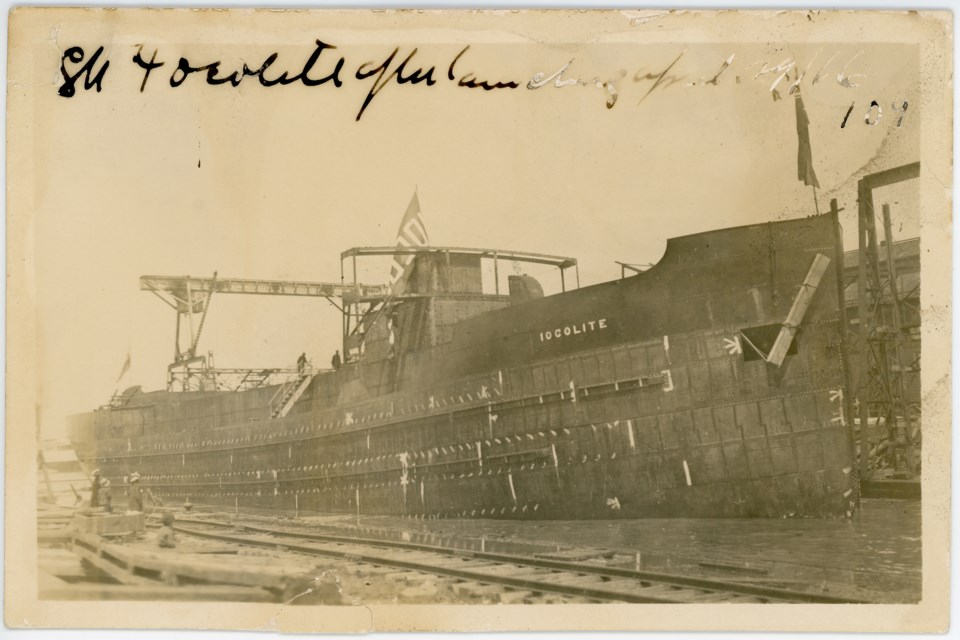This week’sRemember This photograph captures the unique, unpainted hull of the Collingwood Shipyards’ tanker Iocolite(Hull 46) newly launched on April 29, 1916.
A close inspection reveals hundreds of riveted plates along the Iocolite’sstarboard side. The plates are defined by their visible seams as well as the rivets that cover the hull’s surface. The most visible signs of riveting appear just beneath the flag at the ship’s bow where eleven white circles form a horizontal line. Riveting was a painstaking form of ship construction that was used until the introduction of welding in the 1940s.
The photograph of the Iocolite is quite unique in its detail and provides a greater understanding of the importance of the half-block hull models that guided a ship’s construction. Made in the mould loft, these models record every exterior plate required in the building process. Six half block models are in the Collingwood Museum’s permanent collection. These include Waubaushene, Canadian Warrior, Imperial Sarnia, and Chi-Cheemaun. Two of the models have yet to be identified as they lack identifying hull numbers, or names. Please see the second photograph to view the clearly defined hull plates of the Imperial Sarnia.
Iocolitehas had two known name changes: Imperial Kingstonand Charles W. Johnson. Thanks to the efforts of a CollingwoodToday reader, the Charles W. Johnsonis believed to be in operation 103 years after its launch as the Iocolite.
David Collinson writes:
“From 1974 to 1978, I worked for the City of Sault Ste. Marie and the Johnsonwasdocked outside of my office window beside the “new” City Hall. It hauled gravel from Lake Superior for A. B. Mclean.
A quick google map search found the slip where it was docked but alas A.B. McLean is gone. However, by searching the waterfront I found a pier in front of the Canadian Bush Plane Museum with tugs and barges in it. The area was labelled Purvis Marine. They have a web site and list the Johnsonas one of their barges.”
If you have additional information about the Iocolite or the use of half block models at the Collingwood Shipyards, please contact Collingwood Museum staff.
Remember This is a weekly series of historic photographs submitted by the Collingwood Museum toCollingwoodToday.ca. These photographs were originally collected and documented by the Huron Institute in an historicalcatalogue entitled Huron Institute Paper and Records: Volume III. Much of Collingwood’s early history has been preserved due to the dedication and foresight of the early museum’s founders, namely its secretary-curator David Williams, upon its establishment in 1904.


